
Genetics & Plant Breeding
Fundamental Of GPB

Hello! Welcome To Agriculture At A Glance
Here we study about everything about agriculture. Like some main subjects, some important key points. and previous year competitive exam’s MCQ question paper.
Interesting Posts

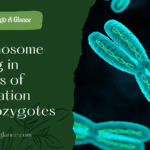
Chromosome Pairing in Meiosis of Duplication Heterozygotes
14 November 2024

Agriculture related all full forms
3 March 2024
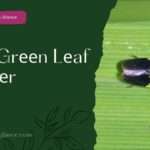
Ricе Grееn Lеaf Hoppеr
22 September 2023
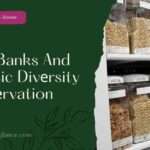
Sееd Banks And Gеnеtic Divеrsity Consеrvation
19 August 2023
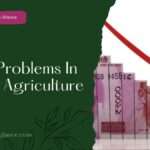
Why Agriculturе Is Not Profitablе In India
4 August 2023
If agriculture goes wrong, nothing else will have a chance to go right.
Introduction to Genetics and Plant Breeding
Genetics is a branch of biology which deals with the study of genes, genetic variation and heredity. Plant breeding is an art, science and technology of developing superior plants of economic utility for the mankind.
Definition of Genetics
Genetics is a branch of biology which deals with the study of genes, genetic variation and heredity.
Genetics is derived from the Greek word genesis that means to become or to grow. The Term Genetics was coined by Bateson in 1905.
The Father of Genetics

Gregor Johann Mendel is the father of modern genetics.
Plant Breeding
Plant breeding is an art, science and technology of developing superior plants of economic utility for the mankind.
1. Steps Of Plant Breeding
- Collection of variation.
- Selection of parents.
- Cross hybridization.
- Evaluation and selection of parents.
- Selection and testing of superior recombination.
- Testing, release and commercialization of new cultivation.
2. Why We Breed A Plant
- Increase the crop yield.
- Increase tolerance of extreme temperature, salinity and drought.
- Increase tolerance to the insect and pest.
- Developing a resistance to pathogens.
- Improve the quality of the crop.
Cytogenetics
The study of chromosome, which are long strands of DNA and protein that contain most of the genetics information in a cell
DNA
DNA stands for Deoxyribonucleic acid and it is Hereditary material. Most DNA is located in the cell nucleus (where it is called nuclear DNA), but a small amount of DNA can also be found in the mitochondria (where it is called mitochondrial DNA).

In 1953, James Watson and Francis Crick proposed the double helix structure of DNA in their paper “Genetical Implications of the Structure of Deoxyribonucleic Acid”
DNA contains the code for building and maintaining an organism. The code is spelled out in the order, or sequence, of four chemical bases—adenine (A), guanine (G), thymine (T) and cytosine (C). DNA bases pair with each other—adenine (A) with thymine (T), guanine (G) with cytosine (C) —to form units called base pairs. Each base is attached to a sugar molecule and a phosphate molecule. Together, base, sugar, and phosphate are called a nucleotide. Nucleotides are arranged in two long strands that form a spiral called a double helix.

Gene

It is the functional unit of DNA. Genes are made up of sequences of DNA and are arranged, one after another, at specific locations on chromosomes in the nucleus of cells. (# pic of gene)
The term ‘Gene’ was coined by Wilhelm Johannsen in 1909
Genome
A genome is the complete set of genetic information in an organism. It provides all of the information required by an organism to function.
Allele
Alternate form of the gene is known as allele. An allele is one of two or more versions of DNA sequence (a single base or a segment of bases) at a given genomic location. An individual inherits two alleles, one from each parent, for any given genomic location where such variation exists. If the two alleles are the same, the individual is homozygous for that allele.
The term ‘Allele’ was coined by W. bateson as ‘Allelomorph’
Chromosome
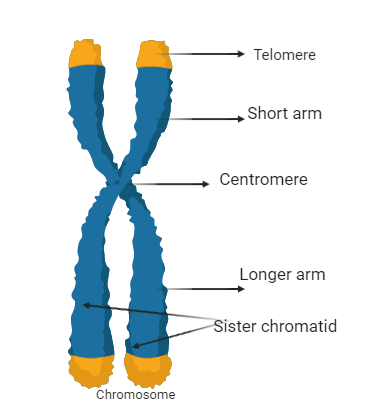
Chromosomes are thread-like structures located inside the nucleus of animal and plant cells. Each chromosome is made of protein and a single molecule of deoxyribonucleic acid (DNA).
Homozygous
Having two same alleles of a gene is called Homozygous.

Heterozygous
Having two different alleles of a gene is called Heterozygous.
Homogeneous
Similar gene makeup of the population. Homogeneous comes from the Greek words hom-, meaning “same,” and genos- meaning “kind.” The similar word homogenous is a synonym of the same origin.
EX:- Pure line
Heterogeneous
Different gene makeup of the population. Heterogeneous comes from the Greek words Hetero-, meaning “different,” and genos, meaning “kind.” The similar word Heterogeneous is a synonym of the different origin.
EX:- MAS Selection
Pure Line
A pure line means those breeds of organisms that have been generated through repeated self fertilization and have become homozygous for a particular trait.
MAS selection
Marker-assisted selection or marker aided selection (MAS) is an indirect selection process where the desired trait is selected based on a marker(morphological, biochemical or DNA/RNA variation) linked to a trait of interest (e.g. productivity, disease resistance, tolerance, and quality), rather than on the trait itself.
Dominant
The allele which will be expressed in heterozygous form is dominant.
Ex:- TT × tt (Here ‘TT’ is dominant)
Recessive
The allele which will not be expressed in heterozygous form but expressed in homozygous form is recessive.
Ex:- TT × tt (Here ‘tt’ is recessive)
Homologous chromosome
The chromosomes having the same chromatide length bearing the same genes are known as homologous chromosomes.
Gene Locus
A fixed position of a gene on a chromosome is known as gene locus.
Variation
Variations are the differences present between the individuals of the same species or different species.
Heredity
The transmission of traits from parents to their off-spring(Child) is known as heredity. The mode of transmission is known as inheritance.
Heterosis
The progeny of crosses between different varieties of a plant species usually exhibit greater biomass and fertility than either parent. This phenomenon is called heterosis or hybrid vigor.
Traits
A trait is a particular characteristic, quality, or tendency that someone or something has.
Ex:- eye colour, height, ears, hair colour etc..
Phenotypes
An external or physical characteristic that appears in an organism is called phenotypes.
Ex:- eye colour, height, ears, hair colour etc..
Genotype
It refers to the genetic makeup of an organism.
Ex:- Homozygous Dominant (TT), Heterozygous (Tt), Homozygous Recessive (tt)
Mutation
Any changes in the DNA sequence of a cell is called mutation. Mutations may be caused by exposure to DNA-damaging agents in the environment. Mutations can be harmful, beneficial, or have no effect.
Mutagen
Anything that causes a mutation (a change in the DNA of a cell) is called mutagen.
